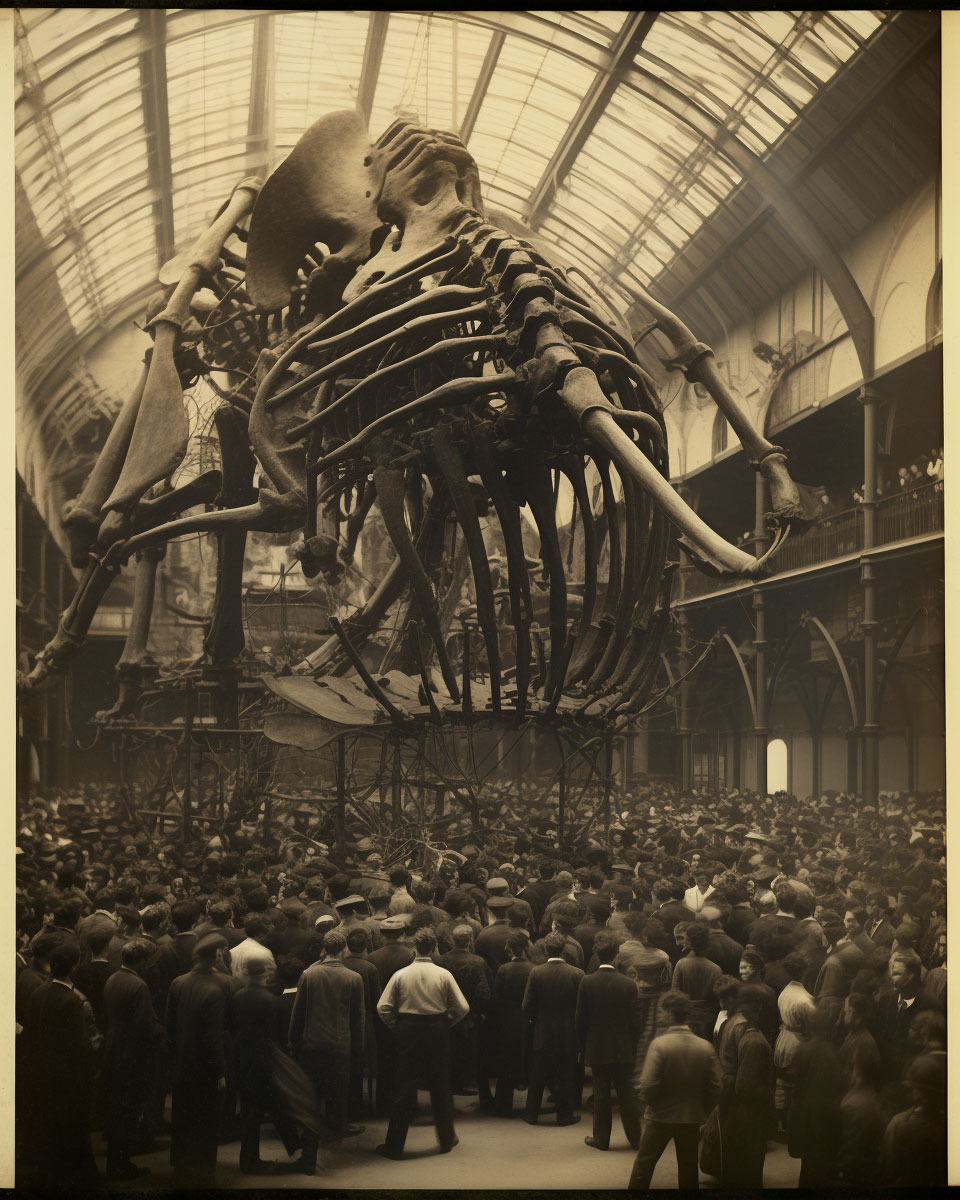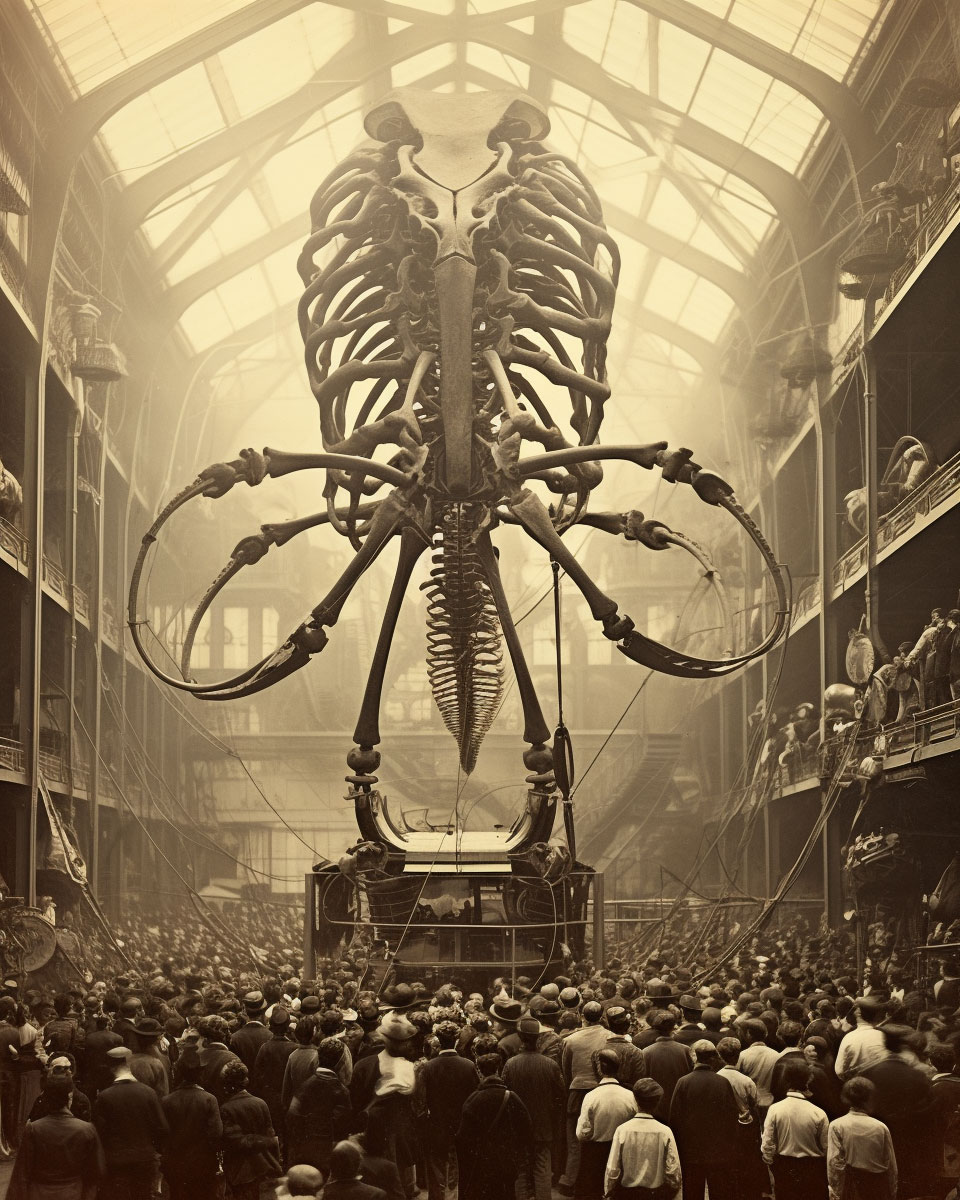Photos at the Museum of Natural Sciences in Budapest in 1882, where colossal fossils of creatures of unknown origin are on display. These monumental remains defy the scientific criteria of the time. Experts debate whether these fossils could be vestiges of ancestral beings from distant worlds or from the depths of the ocean. Some have been named Gigantus rexolitus (a colossal predator with bony spines and sharp claws, possibly adapted to hostile extraterrestrial environments), Oceanodon abyssalis (an ancient deep-sea inhabitant with unusual fins and an unusual deep-sea fins), and Oceanodon abyssalis (an ancient deep-sea inhabitant with unusual fins and an unusual deep-sea fins), with unusual fins and a jaw adapted for capturing prey in the dark abyssal waters), or Avis draconis (a giant bird with membranous wings, reminiscent of a dragon, which may have populated the skies of an unknown world).
Fotos en el Museo de Ciencias Naturales de Budapest en 1882, donde se exhiben colosales fósiles de criaturas de origen desconocido. Estos monumentales restos desafían los criterios científicos de la época. Los expertos debaten si estos fósiles podrían ser vestigios de seres ancestrales de mundos lejanos o de las profundidades del océano. Algunos han sido bautizados como Gigantus rexolitus (un colosal depredador con espinas óseas y garras afiladas, posiblemente adaptado a ambientes extraterrestres hostiles), Oceanodon abyssalis (un antiguo habitante de las profundidades marinas, con aletas inusuales y una mandíbula adaptada para la captura de presas en las oscuras aguas abisales), o Avis draconis (un pájaro gigante con alas membranosas, reminiscentes de un dragón, que podría haber poblado los cielos de un mundo desconocido).





Leave a Reply